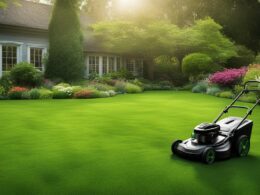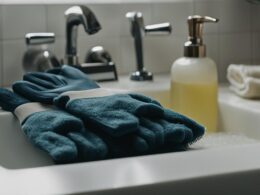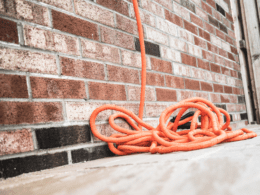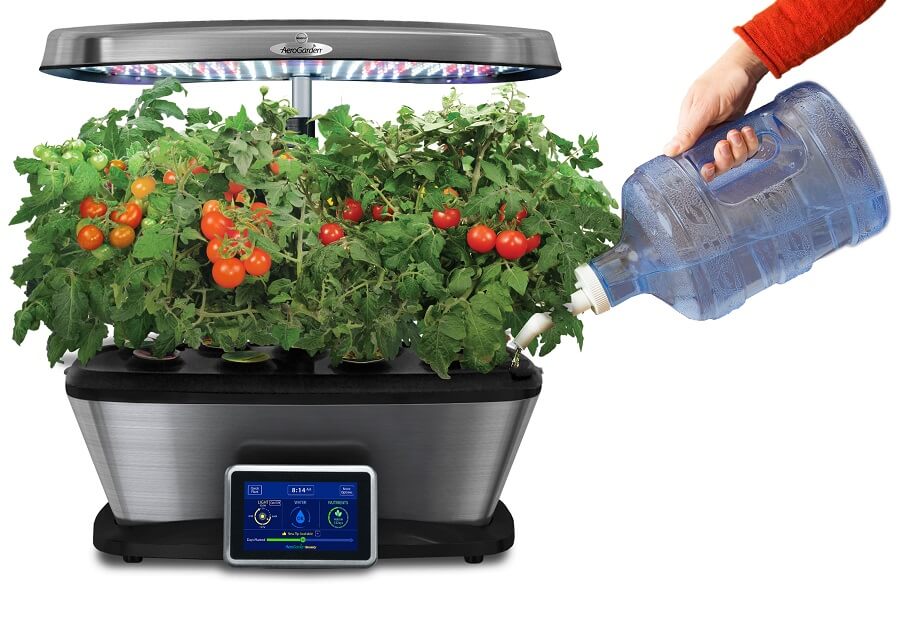If you’re a proud plant parent, it’s important to consider the potential damage your beloved houseplants can cause to your carpet. Without proper precautions, spills, stains, and soil accidents can leave your carpet looking worse for wear. But fear not, with a few simple tips, you can enjoy the beauty of indoor plants while keeping your carpet in pristine condition.
Post Summary:- Choose wide and shallow pots to minimize the risk of tipping and soil spills.
- Opt for plastic pots over ceramic or clay to prevent breakage and soil accidents.
- Consider alternative materials like air plants or gravel that don’t require soil.
- Place houseplants on darker colored carpets to mask potential spills and stains.
- Avoid placing plants in windy areas or where pets can easily knock them over.
Now that you’re armed with these useful tips, you can confidently bring the beauty of nature indoors, knowing that your carpet is safe from the potential hazards of houseplants.
Tips for Placement of Houseplants
Proper placement of houseplants is crucial to protect your carpet from potential damage. By considering a few key factors, you can ensure that your plants coexist harmoniously with your carpet.
1. Choose the Right Location
Select an area in your home that is less prone to strong winds or drafts. Placing your houseplants in such areas will reduce the risk of them being toppled over and causing damage to your carpet. You may also want to consider placing your plants in areas where pets are not allowed to prevent accidental knocking over of the plants.
2. Consider Carpet Color
If you have a darker colored carpet, it can help mask spills and stains, making it a better choice for placing houseplants. Lighter colored carpets may require more frequent cleaning and maintenance to keep them looking their best.
3. Use Protective Measures
To further safeguard your carpet, consider using plant trays underneath your pots. These trays can catch any water or soil that falls out of the pot, preventing it from coming into direct contact with the carpet. Additionally, placing your plants on rugs with rubber backing can provide an extra layer of protection against spills and stains.
By following these tips, you can ensure that your houseplants enhance your indoor space without compromising the integrity of your carpet.
Pros and Cons of Different Houseplant Placement
| Placement Option | Pros | Cons |
|---|---|---|
| Areas less prone to strong winds or drafts | – Reduced risk of plants being toppled over – Minimal exposure to potential damage – Safer for pets |
– Limited placement options in some homes |
| Window sills or raised surfaces | – Adds aesthetic appeal – Keeps plants out of reach of pets – Minimizes risk of spills on carpets |
– Limited space for larger plants – Sunlight may be limited in certain areas |
| Areas where pets are not allowed | – Higher level of protection for plants – Reduced risk of accidental damage – Easier maintenance and clean-up |
– Limited placement options depending on pet restrictions |
Preventing Water Damage from Houseplants
Properly managing the watering of your houseplants is crucial to prevent water damage to your carpet. By following these tips, you can ensure that your plants thrive while keeping your carpet safe and dry.
Using Impermeable Saucers
An effective way to prevent water from seeping into your carpet is by using impermeable saucers underneath the pots. These saucers collect excess moisture, preventing it from causing damage to your carpet. Ensure that the saucers are the appropriate size for your pots and are able to hold any water that drains out during watering.
Maintaining Proper Watering Techniques
When watering your houseplants, it is important to be mindful of the water level to avoid spills. Overwatering not only poses a risk to your carpet but also to the health of your plants. Monitor the soil moisture level and water your plants only when needed. This will help prevent water from overflowing and seeping into the carpet.
Prompt Cleanup of Soil Spills
In the event of a soil spill onto your carpet, it is essential to clean it up promptly. For dry spills, use a vacuum cleaner to remove the soil particles. If the spill is wet, allow it to dry completely before vacuuming. This will prevent the soil from being ground into the carpet fibers, minimizing potential damage.
| Watering Tips | Prevention Measures |
|---|---|
| Avoid overwatering | Prevents water overflow onto carpet |
| Use impermeable saucers | Collects excess moisture |
| Promptly clean up soil spills | Prevents soil from being ground into carpet |
| Monitor soil moisture level | Water plants only when needed |
By implementing these preventive measures, you can enjoy the beauty of your houseplants without worrying about the potential water damage they may cause to your carpet. Taking a proactive approach to water management will help protect both your carpet and your beloved plants.

| Pros of Using Waterproof Pots and Protective Barriers | Cons of Placing Houseplants on Natural Fiber Carpets |
|---|---|
| Prevents water damage to carpets | Increased risk of water stains |
| Minimizes moisture absorption | Potential damage from spills or overwatering |
| Provides a physical barrier between the pot and carpet | Mold growth on carpets |
| Easy to clean and maintain | Color loss from exposure to spills |
Protecting Floors with Plant Trays and Rugs
When it comes to keeping your carpet safe from potential damage caused by houseplants, using plant trays and rugs can be a game-changer. These simple yet effective solutions provide an extra layer of protection against spills, stains, and scratches, ensuring that your floors stay in top shape while you enjoy the beauty of indoor greenery.
Plant Trays: Catching Moisture and Soil
Plant trays are an excellent investment to prevent water and soil from coming into direct contact with your floors. These trays, usually made of waterproof materials like plastic or rubber, sit underneath your potted plants and catch any excess moisture or soil that may fall out. By collecting these potential messes, plant trays help keep your carpet safe and make cleanup a breeze. It’s important to choose trays that are large enough to accommodate your plant pots and deep enough to hold a sufficient amount of water or soil.
Additionally, consider pairing your plant trays with saucers or liners. These accessories add another protective layer, preventing any liquid or debris from seeping through to the tray and ultimately reaching your flooring. Remember to check the trays regularly and empty or clean them as needed to maintain their effectiveness.
Rugs with Rubber Backing: Style and Functionality
For a stylish and practical solution, place your houseplants on rugs with rubber backing. These rugs not only provide a visually appealing base for your plants but also offer an additional layer of protection against spills and stains. The rubber backing helps keep the rugs in place, reducing the risk of accidental movement and potential damage to your floors.
When selecting rugs, consider their size and shape. Opt for rugs that are large enough to accommodate your plant pots and allow for easy movement when necessary. Square or rectangular rugs work well for creating designated areas for houseplants, while round rugs can add a touch of elegance to any room. Furthermore, make sure the rubber backing is of high quality to ensure maximum grip and longevity.
Creating Dedicated Plant Areas
Strategically using plant trays and rugs allows you to create dedicated areas for your indoor plants. By designating specific spots, such as window sills, shelves, or corners, you can concentrate the presence of houseplants in one area, making cleanup and maintenance more convenient. This approach also minimizes the risk of spills and stains spreading across your entire carpeted floor.
Remember to choose plant trays and rugs that complement your interior design style. Consider the color, texture, and pattern of the trays and rugs to create an aesthetically pleasing arrangement that blends seamlessly with your existing decor. With the right combination of plant trays and rugs, you can protect your floors while showcasing your green thumb.
In conclusion, safeguarding your floors from potential damage caused by houseplants is essential, and the use of plant trays and rugs offers practical and stylish solutions. Plant trays help catch moisture and soil, preventing direct contact with your floors. Rugs with rubber backing provide an extra layer of protection against spills and stains while adding visual appeal to your indoor space. By creating dedicated plant areas using these protective measures, you can enjoy the beauty of houseplants without compromising the integrity of your flooring.
Will Using Well Water Harm My Houseplants?
Using well water to water houseplants is generally safe and can be beneficial. However, it is essential to conduct a water quality test to ensure it is not high in minerals or contain harmful substances. If the water quality is favorable, watering houseplants with well water can provide nutrients and hydration, resulting in healthy and thriving plants.
Conclusion
Protecting your carpet from potential damage caused by houseplants is crucial to maintaining its longevity and appearance. By following a few simple tips, you can enjoy the beauty and benefits of indoor plants while keeping your carpet in excellent condition.
Firstly, choose the right pots for your plants to minimize the risk of spills and soil damage. Opt for wide and shallow pots that are less likely to tip over, and consider using plastic pots instead of ceramic or clay ones, as they are less prone to breakage.
Next, pay attention to the placement of your houseplants. Darker colored carpets can conceal spills and stains, making them a practical choice for housing plants. Avoid placing plants in areas prone to strong winds or where pets have easy access, as they can accidentally knock them over and cause damage to your carpet.
Additionally, take precautions to prevent water damage. Use impermeable saucers to collect excess moisture and avoid overwatering your plants. Promptly clean up any soil spills and vacuum dry spills immediately to prevent soil from being ground into the fibers of your carpet.
Finally, use protective measures such as plant trays and rugs with rubber backing. These can catch any water or soil that falls out of the pot, preventing direct contact with the carpet. They also make it easier to move plants without scratching the floor and can create designated areas for houseplants, simplifying maintenance and cleanup.
By implementing these carpet protection strategies, you can enjoy the benefits of indoor plants without worrying about potential damage. Remember to choose the right pots, carefully consider placement, prevent water damage, and use protective measures, such as plant trays and rugs. With these precautions in place, your carpet and houseplants can coexist harmoniously, enhancing the beauty and ambiance of your indoor spaces.
FAQ
Can houseplants cause damage to your carpet?
Yes, houseplants can potentially cause damage to your carpet if proper precautions are not taken.
What type of pots are recommended to minimize the risk of damage?
Wide and shallow plastic pots are recommended over ceramic or clay pots, as they are less prone to tipping over and spilling soil onto the carpet.
How can I protect my carpet from spills and stains caused by houseplants?
Placing houseplants on darker colored carpets can help mask spills and stains. Additionally, consider growing plants that do not require soil or can be grown in alternative materials like air plants or gravel to minimize the risk of soil spills.
How should I water my houseplants to avoid water damage to the carpet?
Use impermeable saucers to collect excess moisture and prevent it from seeping into the carpet. Be mindful of the water level when watering plants to avoid spills. Promptly clean up any soil spills to prevent soil from being ground into the carpet.
Can houseplants damage natural fiber carpets?
Yes, natural fiber carpets, such as wool, are more susceptible to damage from houseplants. It is best to avoid placing pot plants directly on natural fiber carpets to prevent damage.
How can I protect my floor from water and soil spills caused by houseplants?
Using plant trays underneath your plants can catch any water or soil that falls out of the pot, preventing it from coming into direct contact with the floor. Placing plants on rugs with rubber backing can provide an additional layer of protection against spills and stains.









